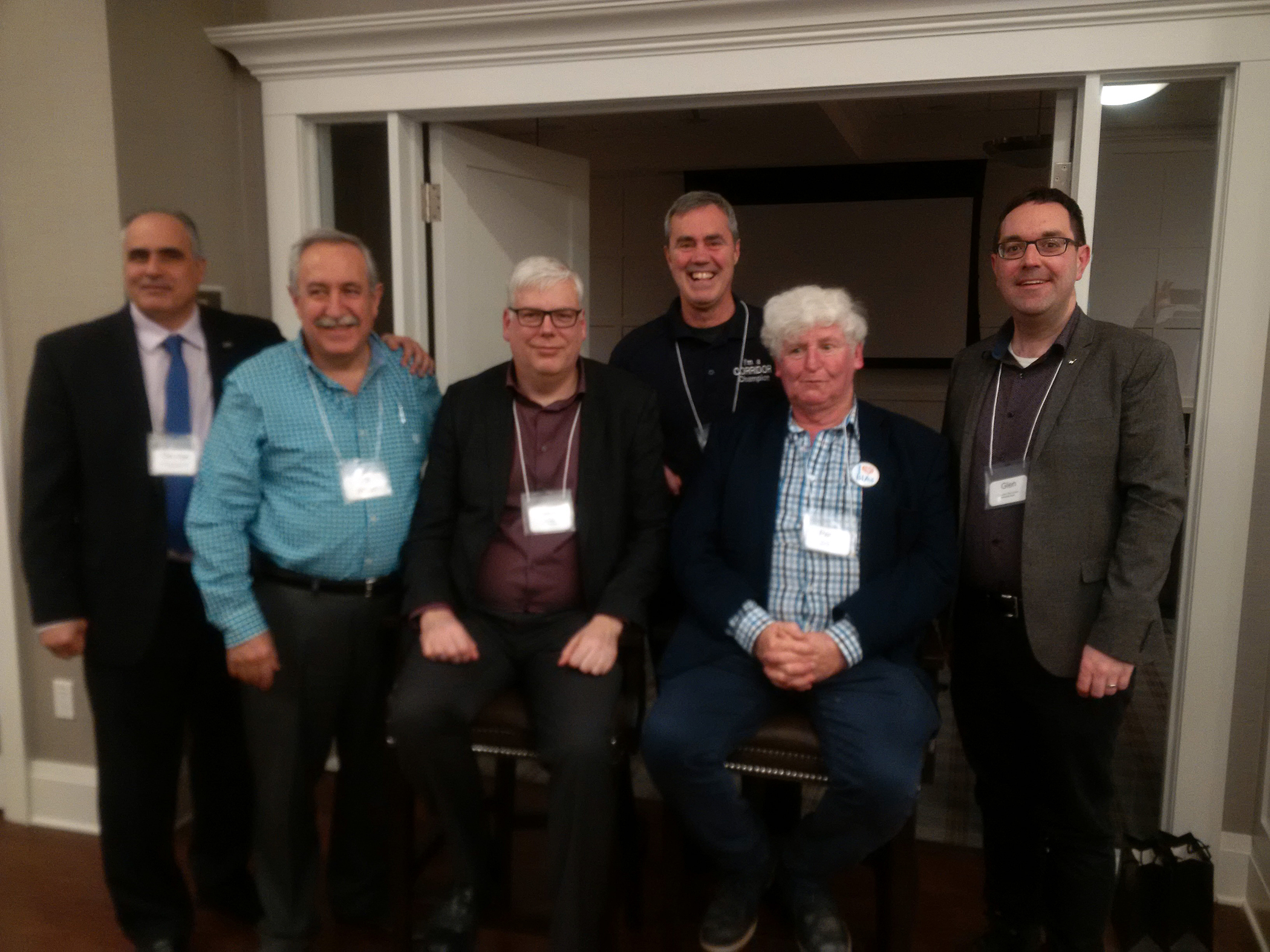Carp BIAs host rural economic ‘chat’
CARP – It was an opportunity for business owners to listen to a rural economic development expert and how it relates to operating within the City of Ottawa.
Carp’s two business improvement areas hosted a “fireside chat” at the Carp Commons Retirement Village last night (April 2) as internationally recognized expert in rural economic development, Peter Kenyon and City of Ottawa general manager for Planning, Infrastructure and Economic Development, Stephen Willis, led the conversation.
The City of Ottawa has recently launched the project to re-write the city’s Official Plan and alongside that project will be creating its first Ottawa Rural Economic Development Strategy. The Carp Road Corridor and Village of Carp BIAs hosted the invitation-only event last night to provide an inside look at the process with subject matter experts.
“Together, we invited Peter Kenyon, Director of Bank of IDEAS, an Australian based rural economic development advisory company, to visit with us in the corridor and village,” CRCBIA Executive Director Roddy Bolivar told West Carleton Online today (April 3). “Peter was in town at the National Business Improvement Area Conference so we took advantage that he was already in town.”

In the afternoon, Kenyon, Bolivar, Village BIA board member Greg LeBlanc, CRCBIA member Jason Lalonde and Jephtee Elyssee with the city’s economic development department toured the area.
“We visited Ital Foods with owner Frank Adamo,” Bolivar said. “Ital Foods is a food distribution company with a focus on Italian food products and their growing brand label. We heard about his company’s origins from the original two owners in a garage to today in a 30,000 square-foot facility and 40 employees, their decision to move and build in the corridor five years ago, the challenge of increasing costs to do business and the advantage he found in the corridor with appropriate land prices and access to Highway 417.”
The group also visited Chantal Hospodar, owner of Serenity Stumps and Cutting Boards, a wood processing and finishing business.
“She too described the origins of her business in her own garage and how her business has grown in particular through website sales across Canada and the U.S.,” Bolivar said. “Chantal described her own business challenges including deciding whether to grow the company.”
The group also hit the museum.
“We visited the Diefenbunker and heard their story of community ownership, successes like how the world’s largest Escape Room brought new visitors to the facility and some of their challenges including maintaining an underground facility,” Bolivar said.
The evening was a “fireside chat” with Kenyon and Willis.
“Along with the Corridor and Village BIA membership, we invited representatives from the Osgoode Ward Business Association and the Stittsville Business Association,” Bolivar said.
In total, 33 people attended the evening conversation.
A popular topic at the event was what will employment in the Carp Road Corridor look like in 20 years?
“Guests noted the nature of employment is changing rapidly and city policies and support for business needs to be flexible,” Bolivar said. “Willis noted that many of the rules the city follows for growth and employment were written in the 1990s and are not well suited to today’s challenges and how to address that challenge is part of the Official Plan and RED projects.”
“We have to make it possible for people to do their own thing and not get in their way,” Willis told the audience.
Attendees wanted to know if the projects consider rural business challenges like lack of transit making it difficult to find employees who can get to work. Community member Will Rado described how the village and corridor are working to understand those challenges and possible solutions including a community meeting being held on April 4.
Business owners asked how can rural communities maintain an identity and a strong local economy?
“Kenyon noted he saw exactly what is needed in his tour today – a group of passionate community builders,” Bolivar said.



